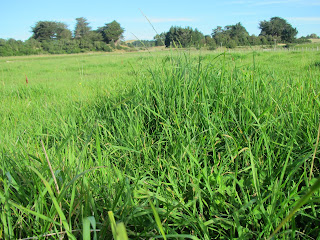In the YouTube video clip (which everyone should watch & listen to) he suggests that: - “The Best Leaders (are the ones that)….the people do not notice their existence, when the best leader’s work is done the people say “We did it ourselves”.
I was privileged to sit beside another visionary NZ dairy leader, Gordon Stephenson recently to hear & understand how the NZ Farm Environment Awards begun & what Gordon envisaged when the original concept was created back in 1993. Gordon was instrumental & a key instigator in the establishment of the QE11 National Trust Act 1977. http://www.openspace.org.nz/Site/About_QEII/News/QEII_celebrates_its_35th_anniversary.aspx “ At a time when environmental sustainability has become an increasingly important factor in consumer decisions, the QEII model demonstrates that production and protection can co-exist very comfortably on New Zealand farms. Gordon wanted “NZ farmers doing it (protecting the environmental “special places” on their farms) because they want to, not because they have to, or because they are paid for it or be forced by regulation to do it”.
He has a 100 year rule..”When you are doing something, consider what would happen if I was doing it for 100 years”. The best farms Gordon believes involve & consider the community in which they live. “Sustainability is a thought process as much as how you do it”.
By encouraging the best farmers to be judged (Balance Farm Environment Awards), there is mutual learning. “These leading “best by example” farmers are so proud & they are willing to talk about it, so germinating & encouraging ideas that are just below the surface, (other farmers keen to learn)” Gordon told me. So from small seeds & the energetic visions of one man we have today a network of regions & farmers throughout NZ competing & learning from world best practice. http://www.nzfeatrust.org.nz/content/51/default.aspx
I sat transfixed in Gordon & Celia Stephenson’s house looking out on an amazing farm vista of native NZ trees & frequent views of NZ native birds flying around the house. This dream like environment didn’t just happen of course! Farmers everywhere would love to live on farms that epitomise their environmental caring efforts. Leaders live the dream as well as walking the talk. It is highly fitting that Gordon Stephenson’s name appears on the supreme Farm Environment Award trophy. http://www.stuff.co.nz/waikato-times/farming/5046559/Environment-trophy-bears-farmers-name Throughout NZ the regional winners are being announced & field days organised for the Balance Farm Environment Awards. http://www.doc.govt.nz/about-doc/news/media-releases/2011/conservation-icon-acknowledged/
How fitting of my visit to this truely beautiful Putaruru farm, that as I drove out the gate I am able to witness Gordon encouraging, coaching & mentoring his grandson to appreciate & care for a better environment.


























